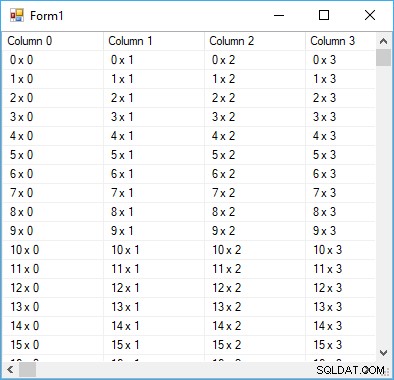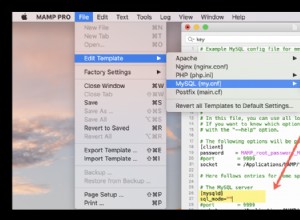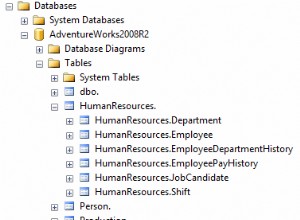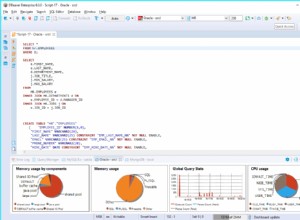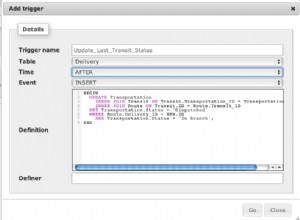Das SSMS-Grid ist nicht C++, es ist weder eine ListView noch ein DataGrid, es verwendet keine nativen Windows-Steuerelemente, es ist „nur“ ein benutzerdefiniertes .NET-Steuerelement mit dem Namen GridControl (in einem Microsoft.SqlServer.Management.UI.Grid Namespace), die zu einer Assembly namens Microsoft.SqlServer.GridControl.dll.
Sie finden es an verschiedenen Stellen:im GAC , in %ProgramFiles(x86)%\Common Files\Microsoft Shared\SQL Server Developer Tools , in %ProgramFiles(x86)%\Microsoft SQL Server Management Studio 18\Common7\IDE , in Visual Studio-Dateien usw.
Es ist kein weitervertreibbares binäres AFAIK, also sollten Sie es nicht versenden, es ist nicht dokumentiert und es ist kein voll funktionsfähiges Grid wie andere. Wie Sie jedoch festgestellt haben, ist es leicht und kann schnell sein, so schnell wie Ihr zugrunde liegender Datenzugriff.
Wenn Sie damit spielen möchten, ist hier ein kleines Winforms-C#-Beispiel (ein 10000 x 256-Raster, das 2,5 Millionen Zellen umfasst, das sich sofort öffnet), das die Verwendung demonstriert:
using System;
using System.Drawing;
using System.Windows.Forms;
using Microsoft.SqlServer.Management.UI.Grid;
namespace WindowsFormsApp1
{
public partial class Form1 : Form
{
private GridControl _control = new GridControl();
public Form1()
{
InitializeComponent();
for (int i = 0; i < 256; i++)
{
_control.AddColumn(new GridColumnInfo { HeaderType = GridColumnHeaderType.Text, IsUserResizable = true });
_control.SetHeaderInfo(i, "Column " + i, null);
}
_control.Dock = DockStyle.Fill;
_control.GridStorage = new GridStorage();
Controls.Add(_control);
}
}
// represents a datasource
public class GridStorage : IGridStorage
{
public long EnsureRowsInBuf(long FirstRowIndex, long LastRowIndex)
{
return NumRows(); // pagination, dynamic load, virtualization, could happen here
}
public void FillControlWithData(long nRowIndex, int nColIndex, IGridEmbeddedControl control)
{
// for cell edition
control.SetCurSelectionAsString(GetCellDataAsString(nRowIndex, nColIndex));
}
public string GetCellDataAsString(long nRowIndex, int nColIndex)
{
// get cell data
return nRowIndex + " x " + nColIndex;
}
public int IsCellEditable(long nRowIndex, int nColIndex)
{
return 1; // 1 means yes, 0 means false
}
public long NumRows()
{
return 10000;
}
public bool SetCellDataFromControl(long nRowIndex, int nColIndex, IGridEmbeddedControl control)
{
// when a cell has changed, you're supposed to change your data here
return true;
}
public Bitmap GetCellDataAsBitmap(long nRowIndex, int nColIndex) => throw new NotImplementedException();
public void GetCellDataForButton(long nRowIndex, int nColIndex, out ButtonCellState state, out Bitmap image, out string buttonLabel) => throw new NotImplementedException();
public GridCheckBoxState GetCellDataForCheckBox(long nRowIndex, int nColIndex) => throw new NotImplementedException();
}
}
So sieht es aus. Auf einem anständigen Computer können Sie ohne Verlangsamung scrollen.

